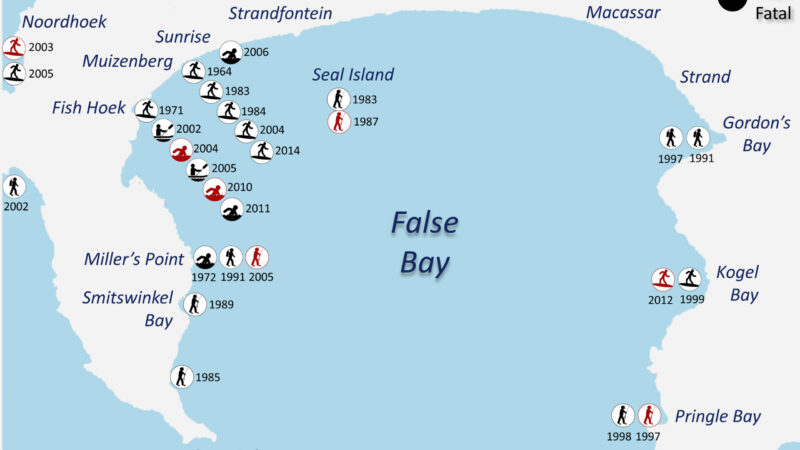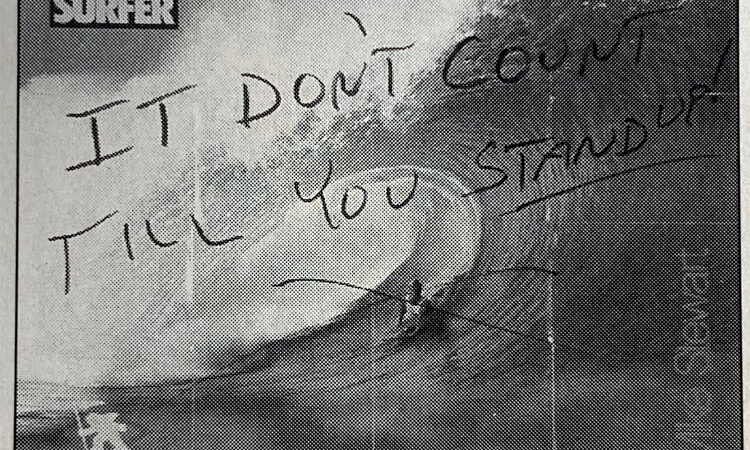In the words of Kenny Powers: “Mahalo you f*ckin’ surfers, you goddamn nerds.”
The scene is from the brilliant and brutish, Eastbound and Down. It’s a fun and fairly exaggerated look at the longstanding feud between surfers and bodyboarders, as illustrated through the disheveled mind of a strung-out former baseball star. But art imitates life, right? (Although in this case, somewhat hyperbolically – Powers then pulls a switchblade and cuts a surfer’s leash after a disputed wave).
Granted, the sibling-like rivalry is real. Surfers and bodyboarders have been frenemies for decades; you can read up on the history here. But things are starting to change. Pro surfers are picking up bodyboards instead of staying drydocked during injury, soft-tops are storming lineups worldwide, and some folks are even taking out the fins to slide around (which makes it, essentially, a king-sized bodyboard).
Hence, the idea for this article. As the lines continue to blur, and waveriding becomes more inclusive, we thought we’d bring in an expert to help facilitate that transition from upright to prone. So, we sent three-time bodyboarding world champ, Jeff Hubbard, a handful of questions that surfers may have for their boogie brethren. After all, as Powers also says, “we’re all part of the same tribe.”

Can surfers and bodyboarders live in harmony? This split peak at Pipeline shows hope. Photo: Jeremiah Klein
Do bodyboarders get offended by the term “boogieboarder?”
Jeff Hubbard: “No we actually froth on the term and use it frequently amongst ourselves.”
Is there a similar thing bodyboarders call surfers?
“A small group of us call surfers ‘Pokey Tips.’ A totally non-derogatory term that just seems more fun and dangerous.”
Do bodyboarders have any pet peeves about surfers?
“Probably only when good boogie waves are wasted. For example, when surfers take off on a closeout bowl then cut right out the back avoiding a massive closeout air bowl. It equals zero happiness for anyone.”
Do traditional prone bodyboarders dislike dropknee bodyboarders?
“No way we enjoy watching waveriding in all forms.”

Dave Hubbard, Jeff’s brother and one of the preeminent drop-knee bodyboarders out there. Photo: Jeremiah Klein
Do bodyboarders get to avoid baggage fees?
“Yes!”
Do bodyboarders bring a whole quiver of boards on a trip?
“Not really. For most riders, two boards is about average on a trip.”
What’s with the new(ish) stringer technology in bodyboards?
“Interchangeable stringers are a great way to change the flex patterns of the bodyboards for various water temperature gradients and wave types. As polypropylene tends to get very rigid in cold water and when riding heavy slabs you want a lot of flex, so using a super soft stringer is helpful.”
Do bodyboarders bring different kinds of fins for different conditions?
“No. Only in cold water since you use thick booties, so you need a larger size.”
What about different boards? Like step-ups for big waves, different shapes for smaller waves?
“I find it is the opposite of surfboards. So, the bigger and heavier the wave the smaller board you can ride. Since those waves give so much more speed you just increase your control by using a smaller board which is super helpful when making crucial late drops or bottom turns on slabby waves. For small waves foam is your friend, whether that means using a thicker, wider or longer board or even a different tail type like a bat tail.”
Wax or no wax?
“Yes, we wax only where our hands and elbows are going. Very little wax should be used near the belly as you need to be able to shift your weight around easily.”
Lots of surfers have recently become smitten by foam, and some are even taking the fins out and riding prone. What do bodyboarders think about the so-called “soft-top revolution?”
“We are amped as it’s great to see people having fun whatever they are riding. If they’re smiling and stoked it’s all good!”
For the uninitiated, what are some things to consider when shopping for a good bodyboard?
“You get what you pay for. The cheaper the board means it is not as performance oriented and probably won’t last as long as a more expensive model. Some features like surlyn slick, poly pro core, mesh and stringers are pretty standard for someone looking for a high performance bodyboard.”
What benefits can surfers gain from crossing into the realm of bodyboarding?
“I think it is helpful to tap into different feelings and perspectives while in the ocean and be able to access new waves and levels of enjoyment. Many waves are more suited to riding a bodyboard, just as a lot of waves are better for surfing. I think this makes people more well-rounded watermen and ultimately better at whatever they are passionate about.”
What’re surfers missing out on in the ocean, that bodyboarders get to enjoy?
“It’s great to experience a different view while on the waves as almost all waves are suddenly overhead. Also, you are closer to the water’s surface and can really feel a total different sensation of the speed of the wave. Bodyboarding lets you find different power sources in the wave and feel the full energy of the barrel when you ride.”
Do you have any questions for your bodyboarding brethren? Drop ’em in the comments below.

“It’s great to see people having fun whatever they are riding,” says Hubbard. “If they’re smiling and stoked it’s all good!” Photo: Jeremiah Klein
Expert forecasts
Surfline’s team of meteorologists provide detailed forecasts for thousands of breaks around the globe. Start your free trial to Surfline Premium and we’ll help you know before you go.





Recent Comments